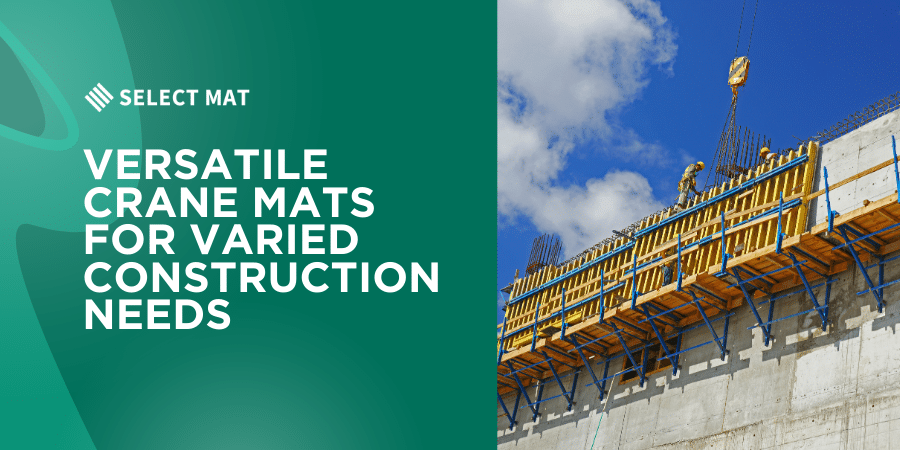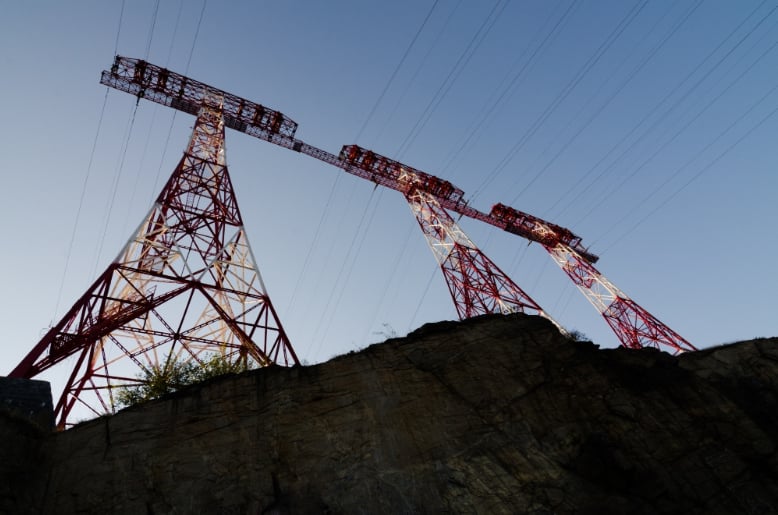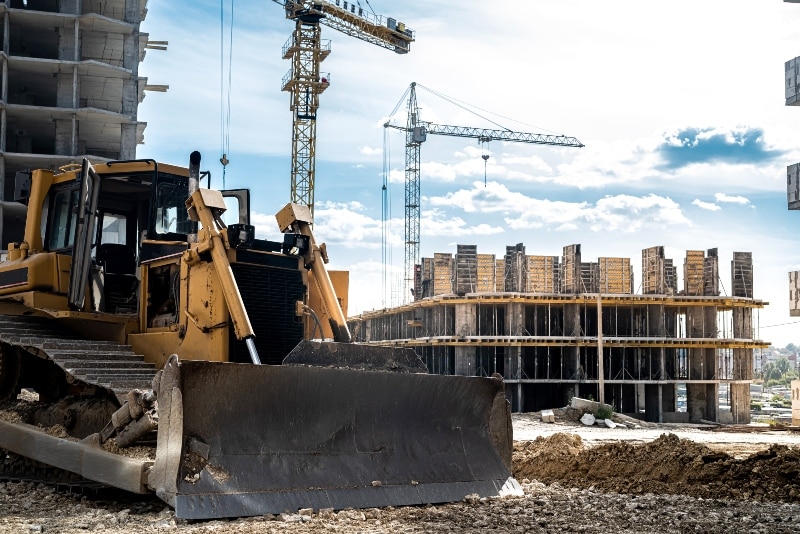The construction industry plays a vital role in infrastructure development, but it often faces scrutiny for its environmental impacts. For those involved in pipeline and transmission & distribution (T&D) projects—such as construction managers, project managers, site supervisors, environmental compliance officers, and even sub-contractors—the choice of construction mats can significantly affect both the environment and project success.
At Select Mat, we understand the need to provide effective, sustainable solutions that respect the landscapes and ecosystems where construction takes place. Let’s explore how construction mat choices can influence environmental footprints, emphasizing eco-friendly practices that align with our commitment to sustainability.
Understanding the Role of Construction Mats
Construction mats are invaluable in providing stable, temporary work surfaces over challenging terrain. They protect sensitive environments from heavy machinery, reduce soil compaction, and ensure a safe, efficient work platform. Selecting the right construction mat is not only about operational efficiency but also about minimizing environmental impacts.
Environmental Considerations in Mat Selection
Material Composition
Construction mats can be made from a variety of materials, each with distinct environmental footprints:
- Laminated Mats: Made by bonding layers of hardwood wood (either by nailing or gluing boards together). These are cost-effective and suitable for rubber-tired vehicles. While they utilize a renewable resource (wood), responsible sourcing is key to minimize deforestation impacts.
- CLT Mats: Composed of engineered pine boards bonded together with adhesives under heat and pressure. CLT mats are known for enhanced stiffness and durability over laminated mats. Unlike laminated mats, the CLT boards do not have gaps in them which reduces areas for soil build up. Composite Mats: These are made from synthetic materials that can be recycled at the end of their lifecycle, contributing to waste reduction. They often last longer and require less maintenance, promoting long-term sustainability. Additionally, these are the only mats that can claim zero cross contamination, when cleaned properly.
- Timber Mats and Crane Mats: While providing excellent support for heavy machinery, sustainably sourced timber is crucial to prevent ecosystem depletion.
Practical Benefits of Eco-Friendly Matting Solutions
For construction project stakeholders in the pipeline and T&D sectors, the selection of eco-friendly construction mats has emerged as a strategic advantage rather than merely an environmental obligation. These choices facilitate operational success while reinforcing sustainable practices across projects. Let’s go deeper into the tangible benefits.
Reduced Site Restoration Costs
One of the foremost advantages of using construction mats is the significant reduction in site restoration costs. Traditional construction practices often lead to soil compaction and landscape alteration, necessitating costly and time-consuming restoration efforts after project completion.
- Minimized Soil Disruption: Heavy Duty Construction mats are designed to distribute the weight of heavy machinery uniformly, minimizing soil compression and preserving the natural terrain. This means less intervention is required after the mats are removed, conserving both time and financial resources.
- Preservation of Vegetation: By limiting damage to the foilage, these mats keep the restoration process minimal. Reducing soil compaction protects the root systems of surrounding trees; thus, reducing or even eliminating completely the long-term loss of trees on a project. Retaining native vegetation not only supports biodiversity but also reduces additional planting costs and maintenance.
- Long-Term Ecological Health: With reduced soil and structural disturbance, the long-term health of the ecosystem is maintained, leading to less vegetation loss, fewer erosion control issues and the subsequent stabilization costs.
Enhanced Compliance with Regulations
Fostering environmental compliance is crucial for construction projects, where non-adherence can lead to fines, operational halts, and reputation damage. Heavy duty construction mats, and even better are those sourced in an eco-friendly manner, offer a pathway to seamless regulatory alignment.
- Proactive Environmental Management: By choosing mats that are engineered to mitigate environmental harm, companies can be proactive rather than reactive in their compliance strategies. This proactive stance helps to circumvent potential setbacks associated with non-compliance.
- Ease of Documentation and Reporting: Environmentally responsible matting products often come with certifications and documentation that simplify reporting procedures for regulatory bodies, streamlining communication and minimizing bureaucratic delays.
- Reputation Enhancement: Projects that evidently prioritize eco-friendly practices boost their credibility among stakeholders, investors, and more importantly, the public, fostering trust and cooperative relationships.
Improved Project Efficiency
Efficiency is at the heart of any successful construction endeavor, particularly in demanding environments such as pipeline and T&D projects. Choosing the right mat for the project contributes significantly to enhancing operational efficiency.
- Superior Performance in Challenging Conditions: Designed to withstand harsh weather and difficult terrain, these mats ensure uninterrupted operations. This reliability reduces the risk of disruptions caused by mat failure, which can slow down project timelines.
- Less Maintenance Requirement: Quality heavy duty mats specific for the project need often require less frequent maintenance due to their durable, high-quality materials. This translates to less downtime, fewer interruptions, and continuous workflow, optimizing the use of manpower and equipment.
- Adaptability Across Projects: The versatility of mats, and more specifically the composite and timber mats, means they can be reused for multiple projects without degradation in performance, allowing for smoother transitions between project phases and locations. This adaptability reduces logistical challenges and potential transportation impacts.
Sustainable Practices in Construction Matting
Site Assessment and Planning
Proper site assessment allows for the strategic deployment of mats, ensuring that the environmental impacts are minimized:
- Terrain Analysis: Understanding soil types, water flow, and local vegetation guides appropriate mat selection to avoid undue ecological harm.
- Engagement with Environmental Experts: Consultations with environmental compliance officers can enhance decision-making, aligning mat choices with sustainability goals.
The Future of Matting – Innovative Technologies
Adopting cutting-edge technologies and materials can further sustainability efforts in construction matting:
- Smart Mat Technology: Innovations like real-time load monitoring and location services are being developed. This can prevent overuse, prolong mat lifespan and quicker deployment to a project (particularly important in storm recovery).
- Renewable Materials: Exploration of renewable and biodegradable materials can further reduce environmental impacts.
Select Mat’s Commitment to Sustainability
At Select Mat, our goal is to provide construction solutions that prioritize the environment. By offering a range of responsibly sourced, high-performance mats, we enable rental customers to achieve project goals while minimizing ecological impacts.
Our Product Line
- Eco-Conscious Choices: Whether opting for durable laminated or recyclable composite mats, our products support efficient, sustainable project execution.
- Guidance and Support: We offer comprehensive support in selecting the right mats for any terrain and project, ensuring alignment with environmental best practices.
Conclusion
By embedding environmental considerations into construction mat selection, project managers, site supervisors, and rental officers can enjoy these practical benefits while supporting broader corporate sustainability objectives. This approach not just safeguards the environment but also secures operational and economic gains, highlighting the comprehensive advantages of eco-friendly construction solutions in modern infrastructure projects.
At SelectMat, we are not only committed to providing reliable access solutions but also to championing eco-friendly practices that protect our planet. By choosing the right mats, contractors, project managers, and equipment officers can minimize their carbon footprint, enhance project efficiency, and contribute to a more sustainable future.




